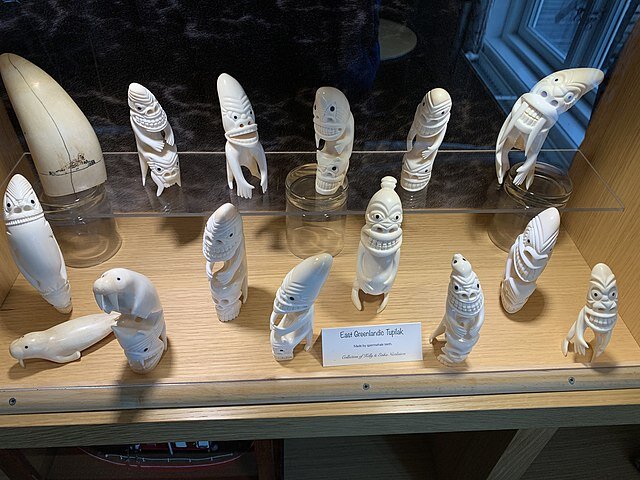Date of Discovery
The date of origin in Inuit mythology is never clearly known, as this culture used these folklores to pass down enriching and enlightening aspects.
Name
The Tupilaq is also known to be spelled tupilak and tupliait, in Inuit traditional tales.

Physical Description
Tupilaqs were made in secret and with materials that did not preserve well, but after European visitors became curious about native legends the Inuit began carving representations into whale teeth. Because Inuit cultures are far from being alike the legends do share some similarities. All taking on a haunting appearance or a walurs-like body structure.
– Igloolik:
The Tupilaq is an invisible ghost-like being, the only shaman could see and scare away from running the game off from the area. This Tupilaq acts more like a dead person’s soul restless acting to avenge.
-Caribou Inuit:
The Tupilaq is an invisible being, with a mix match of body parts from different species (chimera-like creature). Only shamans of the settlements could battle away this creature with the help of spirits.
-Copper Inuit:
The Tupilaq flaws more closely to the half-man, half-demon goat from Christianity’s “Devil”.
Origin
In Inuit religion, the Tupilaq is a monster created by witchcraft or shamanism to avenge or destroy for its creator. In tradition, they are created using materials; bone, hair, and or skin from animal or small child’s corpse.
Mythology and Lore
Once created and given life the Tupilaq was placed into the ocean or sea to seek out its target and destroy them. However, tempting this may seem a warning comes with it, if its mission is failed it shall turn to destroy its creator instead. Legends also state that other practitioners that are stronger than you can also send the Tupilaq back hunting the blood of its creator as well.
When the Christian missionaries arrived in the early 1700s, many Inuit were forced to convert leaving their legends like this to be bundled under “Devil’s” work. This did not make the stories however, instead, the mythology became stronger and more well known
Index
Mythical Creatures Catalogue
Science Nordic
Is there anything we missed about Tupilaq? Let us know in the comments section below!


